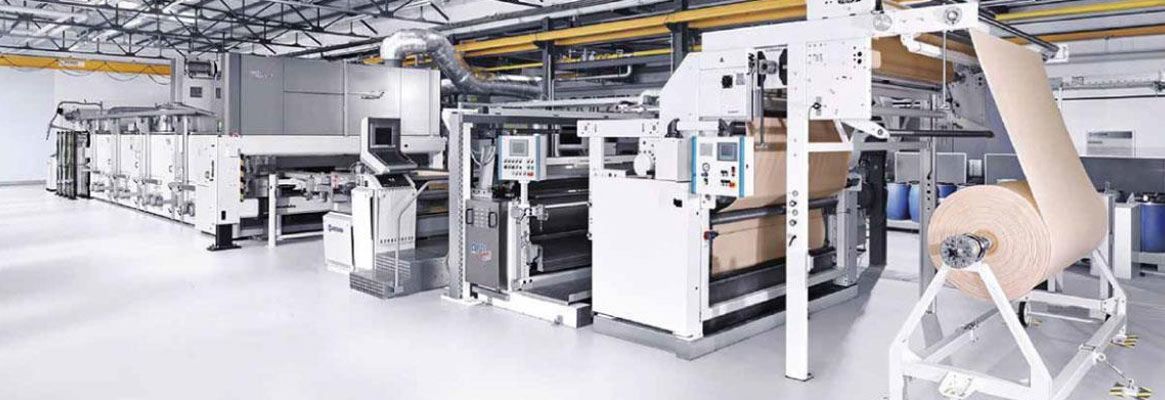By: M.K. Bardhan
Apart from conventional use of textiles like clothing overthe centuries, nontextile industries discovered utility of specially designedand engineered textile structures that could be used in their products, processes and services. Textiles inherently can posses immense versatility and arecapable to shape into various functional products for varied uses - from usualpackaging material to the sophisticated areas like defence and aerospace. Thedecade from 1960 was a period of development of gigantic global man-made fibreindustry and new mechanical and chemical processing technologies likenon-wovens, three dimensional braiding and weaving, coating and lamination,composites, etc. These new fibres and technologies opened up new vistas of hostof application areas for technical textiles per se.
By 1980, there were two distinct situations. On one hand,there was almost a revolution in material science leading to development ofuseful polymers for high performance textile fibres like aramid, PBI, Carbon,PAN, etc. On the other hand, textile industry in major industrialized countrieswere struggling for survival due to low cost of import and almost stagnantconsumer markets. The entire textile industry in developed countries realizedthat non-conventional textiles could offer not only a fresh lease of life totheir textile industry, but also could provide potential remunerative marketfor its healthy growth. Today value - added technical textiles, account formore than 40% of total manufacturing activity of many industrial countries.
Technical Textiles, as earlier known as industrial textiles,were in the product mix of a few manufacturers in low end application likecotton canvas, shoe lining, coated fabric, water holding stores, etc. Infact, alarge portion of Defence Textiles were functional and could be classified astechnical textiles. First deliberation on geo-textiles took place in India in a Defence Seminar in 1985. Few innovative entrepreneurs engaged in Defencesupplies were producing technical textiles like parachute canopy fabrics andaccessories, duel shade fabrics, sleeping bags, WR treated closely wovenfabric, high altitude clothing, tents, awnings, shelters, revetment fabrics,etc without explicit knowledge that such items were none other than technicaltextiles. In 90's, the term 'technical textiles' got widely accepted in thewestern world, and here the textile industry found it remunerative to produce various types of value added technical textiles for innumerable innovative andfunctional applications by non-textile industries or individual consumer.
Advantage - India
It is pertinent to note that the current century will beguided by three powerful engines of development viz. Micro-electronics,Bio-technology and Material Science. Impact of micro-electronics are alreadyvisible with computers and telecommunication being the prime movers of the newindustrial era both in developed and developing countries. While bio-technologyhas made its determined journey to a new era, new technologies in materialslike fine chemicals, optical fibres, high polymeric plastics and resins, fibrereinforced composites, etc have offered better substitutes of traditional rawmaterials of developing countries like copper, aluminum, iron, etc. TechnicalTextiles on its own merits will occupy a prominent place in material science.
Whereas energy was the motive power of the industrial agetill last century, post -industrial world community is driven by knowledge.Centrality of theoretical knowledge is the source of innovation and the policyformulation for the society. World-wide, this has led to the pre-eminence of professional and technical class, and development of new intellectualtechnologies which, with the advance of current century, may be as salient inhuman affairs as machine technology has been for the past century and a half.Conventional textiles were considered as products of low technology of makingyarn, fabric, dyeing, etc. Technical textiles governed by rigid specificationparameters, consistent quality requirement, meeting the demanding engineeringtolerances, reliability over long period of use of end stores, variednon-textile applications, etc. essentially require hightech emergingtechnologies in most of the products and processes. Introduction of smarttextiles, plasma and nanotechnology, composites for space and high-endapplications have changed the textile technological scenario drastically andthey possess knowledge, not conventional know how of production.
Being essentially driven by knowledge-based innovation, the growth of technical textiles can be truly phenomenal, and functional applications and value addition can make such textiles space setter of technological progress. The introduction of new emerging technologies for production of technical textiles
|
Major Non-textile Industries that Use Technical Textiles |
||
|
* Advertising |
* Paper |
* Mechanical Engineering |
|
* Fishing |
* Building |
* Recycling |
|
* Mining |
* Horticulture |
* Environmental |
|
* Agriculture |
* Pharmaceutical |
* Medical |
|
* Food |
* Ceramic |
|
|
* Oil Industry |
|
* Rubber |
|
* Land- scaping |
|
|
|
* Automotive |
* Plastics |
* Protection |
|
* Furniture |
* Chemical |
* Transportation |
|
* Packaging |
* Leather |
* Space |
|
* Aviation |
* Printing |
*Wire |
|
* Home Textiles |
* Electrical |
* Wood Processing |
will offer advantage to restructure the domestic and global
pattern of textile production and trade in a significant manner.
Domestic Scenario
Till recently, the contribution of the Indian textile industry towards technical textiles was restricted to a few low technology and less sophisticated items like tarpaulin, industrial filter cloth, bolting cloth, textiles for baggage, tyre cords, belting, etc. Another area of notable contribution of the Indian textile industry, particularly the decentralized sector, is textiles for strategic applications viz. national security. For example, parachute canopy fabric used for man-carrying, supply-dropping, brake parachute application, etc have been largely indigenized and even exported to other countries, even if in small quantities. Indigenized aerospace textiles have contributed significantly to the success of aviation, space and missile programmes.
It is evident from such examples that India have the advantage of a strong base in terms of expertise, manpower caliber, material
availability, and even in terms of machinery, equipment, testing and
evaluation, processing and technology. However, one cannot fail also to observe
that available resources have not been used or augmented and updated with the
changing trends in application of textiles with particular reference to
technical textiles.
Process of globalization was almost complete by the year
2005 resulting in disappearance of geographical trade barriers between the
countries. Like developed countries, technical textiles will ultimately replace
many conventional materials and India, should find potential consumption and
market for technical textiles. Developed countries are anxiously waiting for opportunities
in developing countries, such as India, having large market potential. Before
entry of multinational/transnational companies in the area, the indigenous
industry should prepare itself to avail of this potential domestic market as
well as competitive global market.
Advantage of India is, according to various international
marketing consultants, that India has strong potential to grab a substantial
share of the world market for technical textiles in the next decade, if she prepares herself technologically as well as investment wise and takes up challenges, with
right thrust in terms of areas of applications, product groups, and technology.
Infact, there is already a slow but perceptible sign of growth in a few specialized fields. The use of geo-textiles for various applications including construction activities on many infrastructural projects has been well documented. Although the use of geotextiles in Prime Minister's Quadrilateral Road project provided a good opportunity for geo-textiles, unfortunately the road designers and construction engineer largely ignored such use. It was a missed opportunity. Consumption of certain medical and health care textiles is growing in the country.
Technical Textiles in the form of shelter, protection, transportation, etc are most suitable from the point of logistics for the victims
of cyclone, draught, flood, earthquake, fire, etc, which are rather recurring
events in our country. With the Indian population over a billion, it would not
be possible to avoid or contain the demand of technical textiles. India is an emerging economy, and whether technical textiles can be indigenized or not,
their markets are bound to grow on globalization.
With the rapid development of material science offering
efficient alternatives, the use of technical textiles will only gain momentum
in Asia in general, and India, in particular. Defence applications,
environmental requirements, new uses of old products, new products for old uses, space exploration, product life cycle and development of hyper strong
fibres will only enhance the depth and breadth of application of technical
textiles. Concern about environment and sustainable development will offer
growth areas in technical textiles, helping environment friendly production processes and material.
High performance bio-degradable fibres, "Smart
Material' or "Intelligent Material' which are capable of changing their
characteristics according to outside conditions or a stimulus, when fully
developed, will give tremendous impetus to the application of technical
textiles in national defence application.
The role of technical textiles has become so eminent that
the future of our textile industry in the next few decades will be determined
by its performance in the area of technical textiles.
To take advantage of the emerging technology of technical
textiles, focus should be on the various products vis a vis applications to
help our textile industry not only to survive, but also to thrive by consuming
domestically as well as exporting such value added products, which are likely
to be cheaper in comparison to those produced in western world.
India is destined to emerge as a consumer of technical textiles in near future,
considering the march towards economic upliftment, infrastructure development,
FDI and requirement of our huge population. Unless such value added textiles
are indigenously produced, import in the competitive global market will be
quite costly to the national economy.
Expert Committee on Technical Textiles (ECTT) constituted by Ministry of Textiles conducted a survey by Tata Economic Consultancy Services (TECS), which revealed the following:
- Indian textile industry produces items of all twelve segments (Mobiltech, Meditech, Sportech, Protech, Indutech, Geo-textiles, Packatech, Oekotech, Agrotech, Clothtech, Buildtech and Hometech) of the technical textile industry though in varying quantities.
- The production of technical textile items in the small scale sector in an unorgansied fragmented manner is also significant.
- The technology used by the small and medium scale units is, by and large, traditional. Not many projects are based on state-of-the-art technology comparable to global player.
Though the findings of the survey by TECS found production of all 12 sectors of technical textiles, it is also pertinent that consistent
quality, homogeneity, conformity to the rigid specification parameters are
often not of global standard. While low end products of technical textiles may
serve the domestic requirements, products for hitech application as well as
global competition, will essentially require upgradation of manufacturing
infrastructure as well as the technology.
For promotion of domestic technical textile product, new facilities will have to be created alongwith incremental upgradation of existing
facilities. Promotion of domestic products will have to be preceded by market development. Perhaps, product development coupled with simultaneous market
development for technical textiles are likely to hold the key to future
success of our textile industry.
Most of the technical textile products are well within the range of production capabilities of the domestic industry with existing facilities or with some incremental addition to the existing facilities. The potential market size estimated for the current financial year (2007-2008) is about Rs. 42,000 crores out of which about Rs. 30,000 crores will be technical textiles components.
Raw Material
An advantage that India enjoys for development of technical
textiles lies in the fact that its down stream industry is traditionally vary
strong. It produces most of the natural textiles fibres and has cotton
sector, jute sector, woollen sector, etc equipped with the required
manufacturing infrastructure for each type of fibres. India has now a mammoth man made fibre industry producing in bulk all textile fibres both
regenerated and synthetic. Processing and finishing sector also getting
modernized in quick space. Except for hi-tech products of technical textiles,
many of the products can be manufactured with the existing industry or with
incremental upgradation.
India is endowed with 'natural industrial' fibres like jute, coir, etc.
Western countries which took initiative for technical textiles mainly
concentrated on man made fibres, as they do not produce jute or coir fibres. India along with the route of man made fibres, have excellent scope to use jute, coir,
hemp, etc. for production of bio-degradable technical textiles depending on the
application areas.
India offers great advantage in respect of raw material availability for manufacture
of technical textiles. Natural fibres like cotton, jute, wool, coir, silk,
hemp, etc are adequately produced indigenously. Similarly, there is a strong
base for production of polyester, nylon, viscose rayon, acrylic, polyethylene/polypropylene etc in the country. High tenacity pqlyester and nylon polyester hollow fibres, etc
used for technical textiles are also produced.
Present product mix of traditional textiles are not
remunerative enough and therefore, more and more the idea of value-addition to
textile products is gaining momentum. Like silver lining in the dark cloud,
technical textiles offer great advantage to the industry to integrate the production facilities for the emerging technology while restructuring and modernizing the
industry. Technical textiles, in this context have not only established a
strong potential to offer an excellent opportunity for the revival of the
textile industry, but also a direction, ways and means to sustain and thrive in
future.
About the Author:
The author is associated with Wool Research Association, Thane.
To read more articles on Textile, Industry, Technical Textile, Dyes & Chemicals, Machinery, Fashion, Apparel, Technology, Retail, Leather, Footwear & Jewellery, Software and General please visit http://articles.fibre2fashion.com
To promote your company, product and services via promotional article, follow
this link: http://www.fibre2fashion.com/services/article-writing-service/content-promotion-services.asp






_Small.png)

